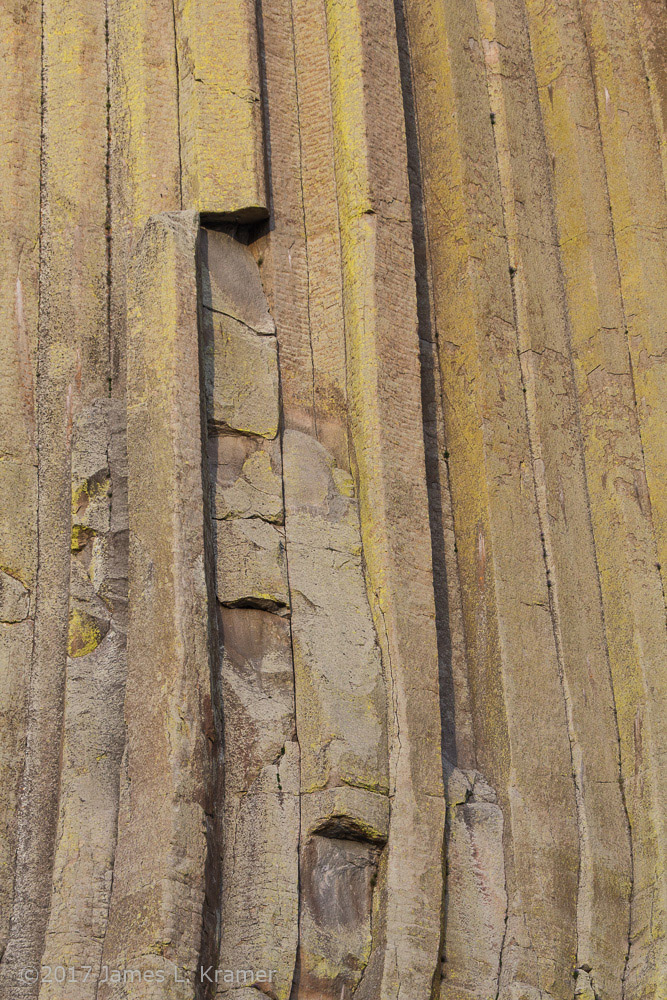
I’ll let you figure it out.
Okay, I’ll give you a hint: da da da da daaaaaa…

I’ll let you figure it out.
Okay, I’ll give you a hint: da da da da daaaaaa…

This is an emerald tree boa (Corallus caninus) – or at least, it was when this was taken back in 2005. In 2009, herpetologists suggested that there was a separate species from a different geographic area, so this one might have changed taxon then when I wasn’t there to witness it.
I would certainly like to be getting such pics in “the wild,” but as yet I have not traveled to South America, despite the excessive funds that nature photography brings in. Instead, this was photographed at the North Carolina Museum of Natural Sciences in Raleigh. Emerald tree boas have virtually no other position that they can be found in, but I just liked the textures of the skin. Those pits!
I know, that’s a pretty funny thing to ask on a blog that gets no comments whatsoever, but I have an active fantasy life…
Anyway, here are two versions of a view from the beach trip back in May:
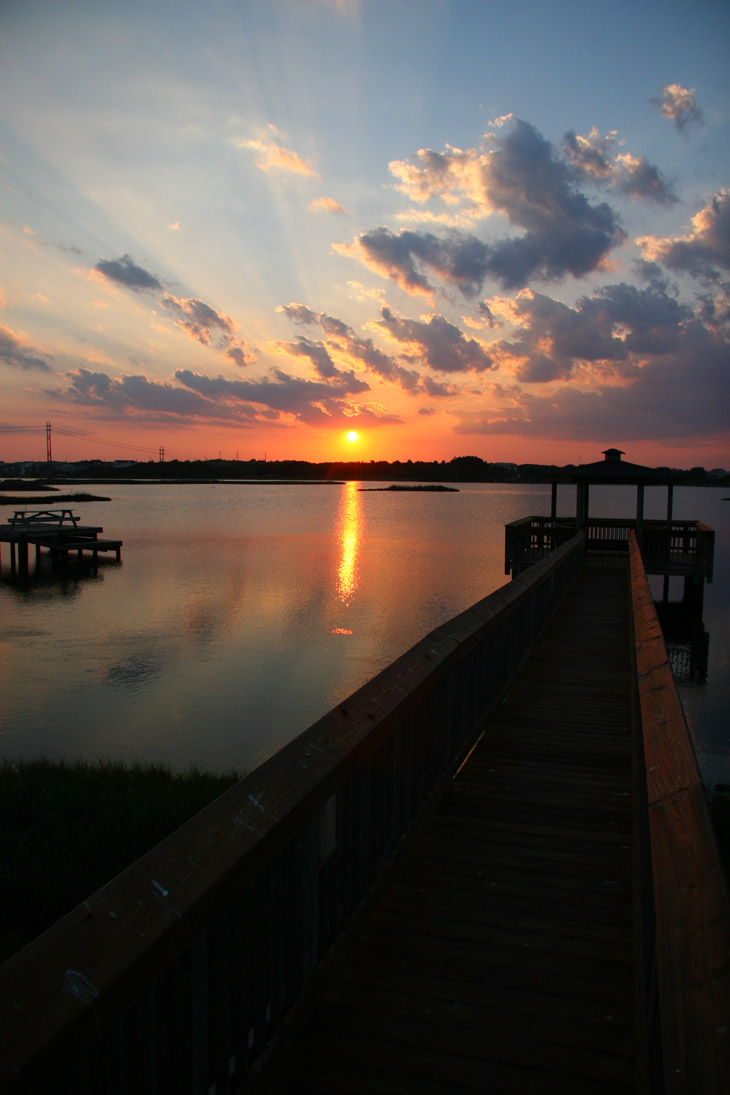
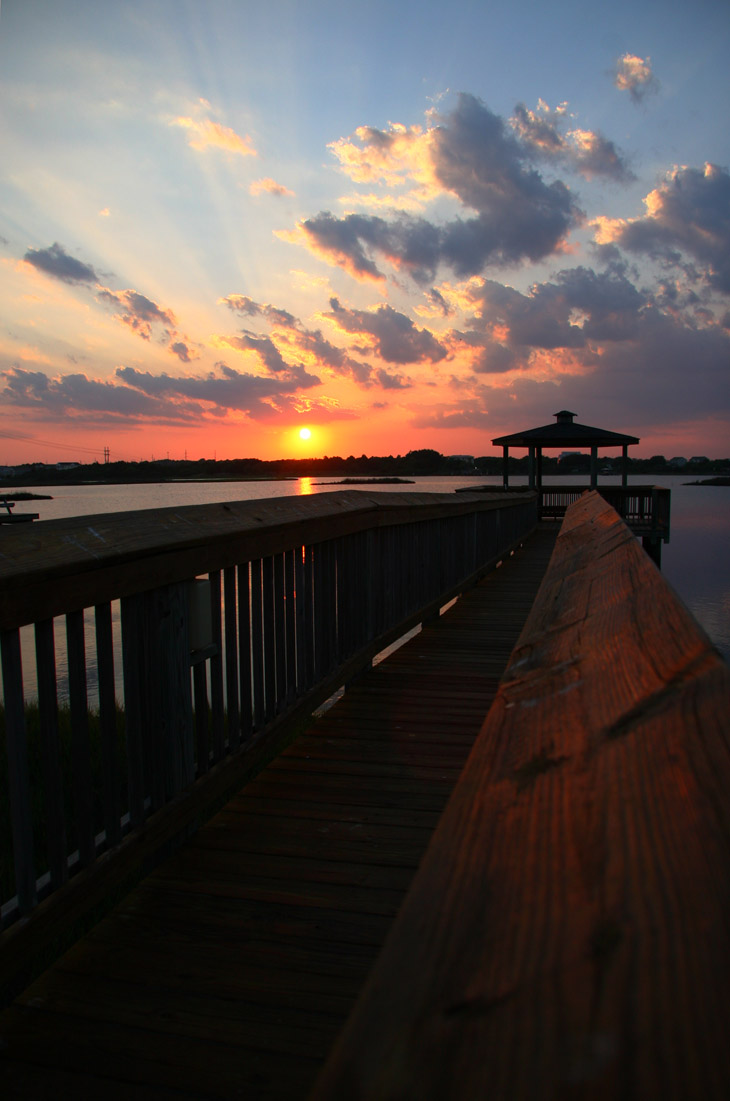
So, not a huge difference between them, but a noticeable one. Both were taken at the same focal length (17mm,) but for the second one I crouched a bit to use the railing of the deck as a more distinctive element. The first, by the way, was taken at eye level, and I’m not that tall – the wide-angle lens makes it seem higher than it was.
So, which do you like better? Go ahead and take a moment to consider before I introduce my own thoughts.
”’
”’
Here’s what I’ve been seeing myself. I like the first for the reflection of the sunset in the water, and more emphasis on the sky and the sunbeams. But the gazebo roof blends into the horizon, and the railed walkway itself seems too distant, as if we’re up on a ladder. In the second, the gazebo becomes more of its own element, and the railing is more dynamic and adds depth, but at the expense of the sunset – it no longer seems to be the focus of attention.
Had you seen either by itself, you might never have cared about how it could be different, but with the ability to compare, you can see how two slightly different positions can result in significant changes in the result, and of course have a hard time deciding on which is best. Or at least I do. Now I wish I’d split the difference for a third frame.
And yes, this was a blatant attempt to maintain that I’m still here and Jim’s pics haven’t taken over the blog. I just don’t have enough time to write much, still, but I’m working on it. A couple of lengthier posts are coming soon*
* You know, for my badly-mangled definition of “soon”…
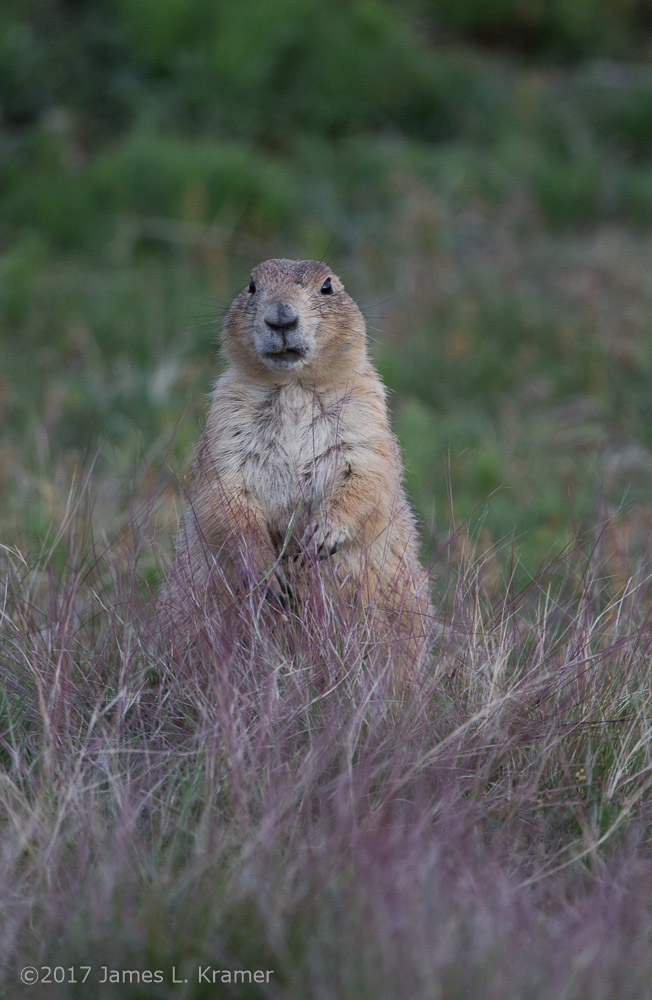
We’ve left Montana now and have traveled to Wyoming, in a touristy area. You can tell that last bit from the reaction of the locals, in this case a black-tailed prairie dog (Cynomys ludovicianus) showing its typical response to photographers. Or at least, photographers that aren’t offering Cheetos.
Talk about timing. Tomorrow, Saturday August 12th, is National Miss An Astronomical Event Because of Shitty Conditions Again Day. Yes indeed, it’s the day (or rather the night) where you plan on trying to see something cool going on above our heads, but can’t because the clouds (that have been gone for weeks) rolled back in, or it’s a freaking full moon that puts out too much glare to see faint objects, and so on.
In a stunning turn of coincidence, tomorrow is also the peak night of the Perseids meteor shower, so you have a perfect opportunity to celebrate this holiday. Make your plans to be out late for hours Saturday night, someplace with a nice view of the sky far from city lights, and who knows? Maybe you’ll be lucky enough to get rained out. You might be skeptical that things can turn out this way, but I can tell you from experience, this has happened to me more often than not. It is, in fact, statistically proven to bring in rain during droughts, and even if clear skies and a lack of moonlight seem destined to ruin the holiday, meteor showers are virtually guaranteed to perform dismally the more prepared you are for a show. What makes it even better is how many photos from other photographers you will see afterward that utterly missed out on the holiday, and got great shots because of it. It’s shameless, I know, but feel free to gloat a little when it happens.
If, by some miraculous chance, you miss out on this holiday yourself, there’s always the total solar eclipse coming up on the 21st where you’ll have another opportunity to observe this holiday (and nothing else.) So don’t feel bad if you get a fantastic show tomorrow – there will be other events to miss.
This post is effectively illustrated with no illustrating image.
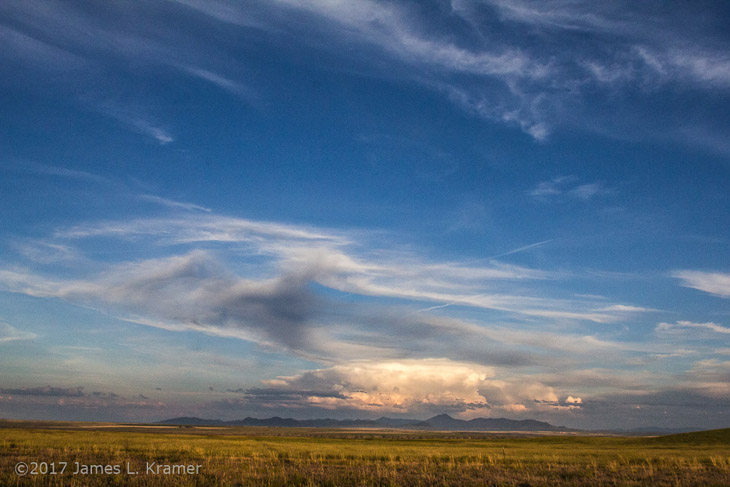
The things that I get up to…
So, knowing roughly where Jim was when he took this shot, I pulled up Google Earth and started poking around to see if I could determine just how far those peaks were. And in the process, realized that I had found the precise location of nearly all of the preceding Montana pics. Yes, even the swing set – mostly because it’s not far removed from the other, easier-to-spot subjects.
The peaks were easy to determine, taking a beginning cue from the light angle – they’re to the northeast, about 40 kilometers (25 miles) away. Judging from the shadows, I’m going to assume the storm is that far too, which will give you a faint idea how far away some clouds can be seen – just, not too well since he shot this at 20mm focal length, which is wide-angle and makes things look further away than they are in reality; the thunderhead itself looked much bigger and closer to Jim, and it’s likely you could see such a tall cloud at least twice as far away as this, perhaps much more.
In examining the photo, I realized that it looked like pre-sunset colors on the clouds too, and checked the time stamp to confirm. It said 22:00 hours, which was slightly confusing until I realized Jim’s camera would be set to Central and not Mountain time; translated, this meant 9:00 PM, and sunset that day and location was 9:26. Okay then.
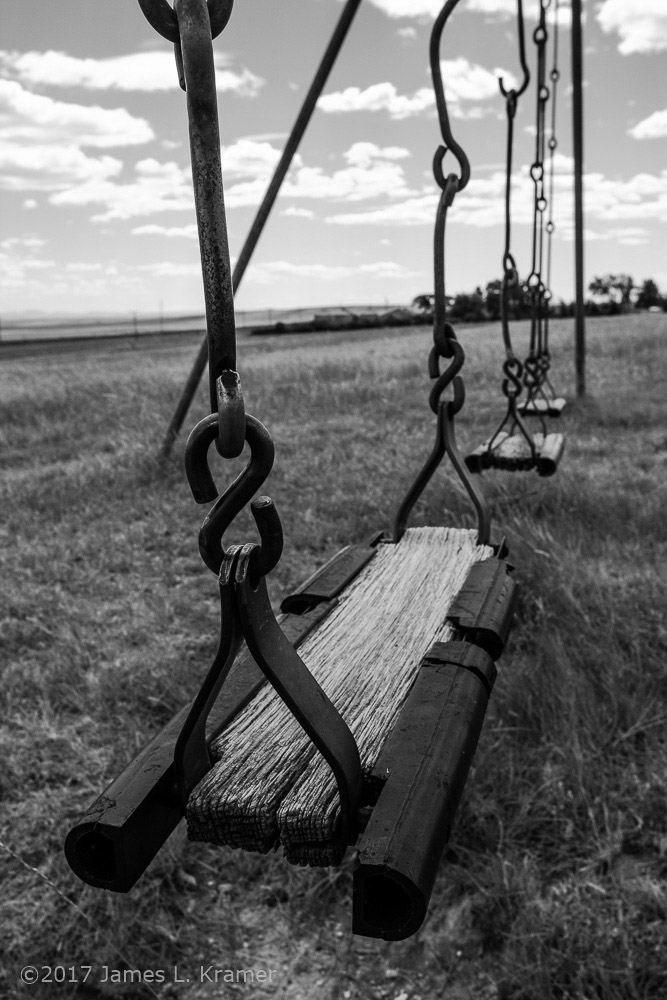
Today’s image, compared against yesterday’s, is a good example of how to approach the same subject in different ways, and a damn strong fartistic composition to boot. Good contrast, good depth, and a great diagonal element to the framing. Switching to monochrome eliminated the upbeat aspect of the blue sky and enhanced the textures, and there’s even the long grass to express the disuse of the area, as if those cracked edge panels wasn’t evidence enough. Nicely done!

Whether it’s accurate or not, Jim managed to provide a distinct impression of the area that he visited in Montana with virtually all of the photos he sent along (the flowers notwithstanding.) Despite the sky conditions, you can almost hear the creak of the chains as the swings drifted lazily in the breeze. And since I have other pics of that imposing edifice in the background, I’m reasonably certain that it is, or was, an outhouse, which is a level of unexpected convenience. It seems necessary, though – I imagine it’s only a five-mile hike to the nearest house…
This is a fun aspect of photography though, and one that I tell my students all the time: what you show in the frame (and what you don’t) creates the mood or setting, and it doesn’t necessarily have to be accurate. It may only be one narrow perspective or angle that shows the empty hills – and really, there’s just one hill – but since that’s all the viewer sees they tend to interpret it as representative; everything looks like that. You can easily manipulate the impression, with just a little selectivity when framing.
The counter aspect is that, once you’re aware of this, you start automatically seeing images with a thought towards it, and wonder what’s purposefully been left out. Now I imagine a busy highway behind Jim, the wake of the passing diesel trucks buffeting him as he carefully framed the image before he crossed the road to go to the Waffle House there for lunch. And now you have that impression…

I suspect this is the same barn as the one seen two days ago, turned monochromy by Jim being fartsy again – it’s certainly the same kind of (inept) construction. I’m probably going to find out Jim’s father-in-law built this…
And now I have to admit to curiosity over what purpose this building served. First, if it is the same building, then its proximity to the railroad tracks was important (you can glimpse them in the photo from two days ago, but I have others from the area so it’s more obvious to me.) And then there’s that ladder up the side, but also a platform near the top underneath the little window, almost disappearing among the busy textures. Did someone need to regularly sit or stand up there? Was it needed to stack something while handing it in or out of that portal? Is it a window planter that the ACLU petitioned for to improve the conditions of the prisoners within? I’m lost…
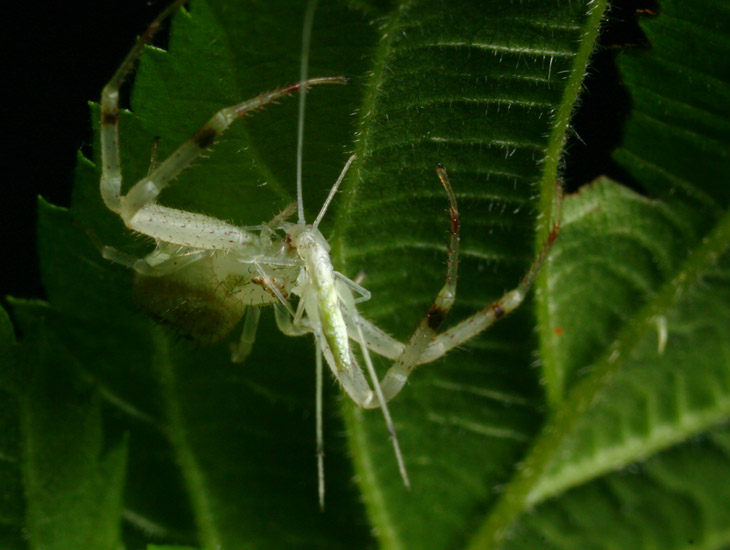
I just have to do this to mock the morose Mr Bugg, whose blog keeps writing checks his schedule and dedication can’t cash. If you don’t know what it means to cash a check, ask your grandfather. At the same time, if I go too long without posting Jim’s pics will take over the blog…
Anyway, I had these sitting in my stock folders since June, when out prowling in the yard one night and spotted a small crab spider (genus Mecaphesa) hanging out on a berry bush. Very close by, a narrow-winged tree cricket (Oecanthus niveus) wandered along, gently feeling its way with its long antennae. Something wasn’t working as intended that night, because it actually tapped the crab spider on the back multiple times, alerting the spider to the cricket’s presence and thus sealing its own doom. You would think this is what antennas are for, and that the cricket would have jumped away as soon as it detected the spider, but it remained fatally oblivious. Even if I’d had the camera in hand, I’m not sure I could have framed and focused in time to capture the drama, but the evidence remained when I came back out with the rig, and so I did a few images of the feasting spider.
A few hours later that night, the same spider now brandished some type of treehopper nymph (genus Cicadellidae,) so it seemed to be having a successful evening. And presented me with a better portrait angle.
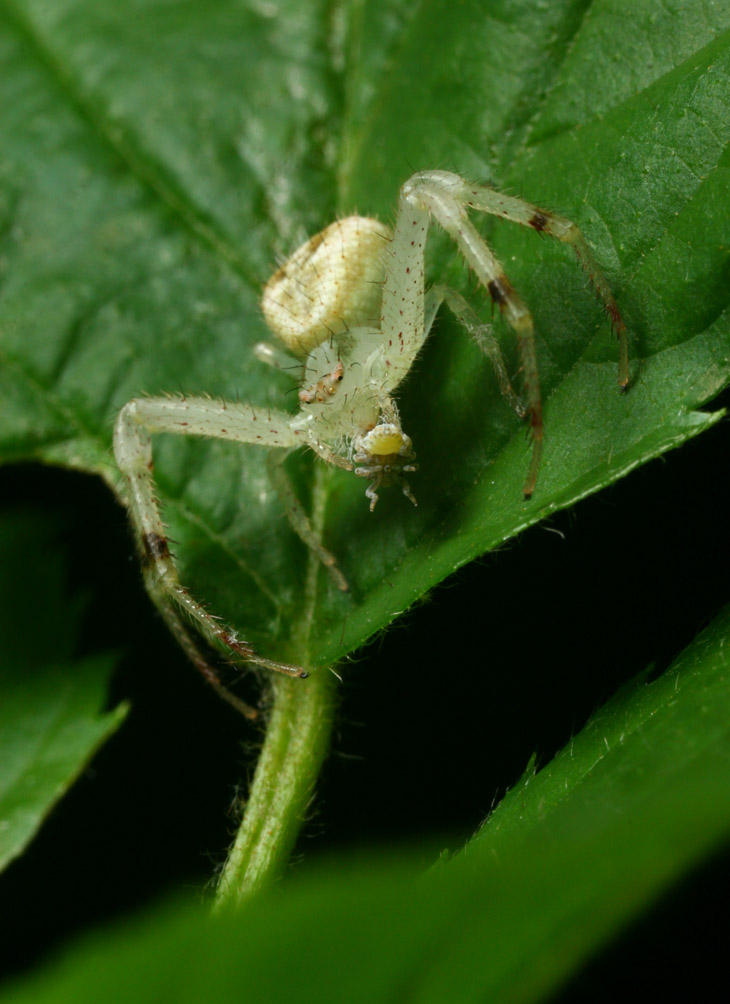
By the way, you naturally remember the post from a few days ago where a caterpillar received some unsavory attention from a wasp; I said then that I was hanging onto the caterpillar to see what (literally) developed. In the intervening several days, the hapless larva largely hasn’t moved, though when disturbed, it shows that it’s clearly still alive by wiggling in a lackluster manner. It hasn’t eaten, and in fact hasn’t stirred from its leaf.
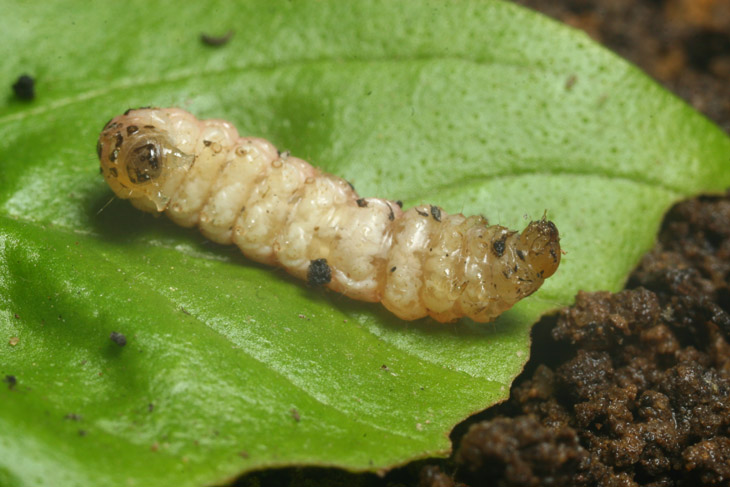
Its color is pretty weak now, but that’s the only thing that can be said about its appearance. I even held it up to a strong light to see if I could make out anything within, without luck: there’s a uniform mass blocking the light, but nothing shifting around in there and nothing the least bit curious-looking.
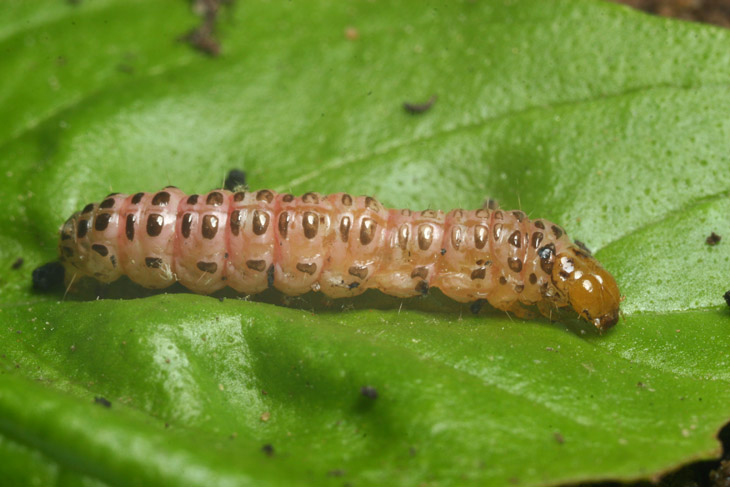
There are vague suspicions in my mind that something else is going on: the wasp was simply protecting its area from a marauding species, or it left the caterpillar as bait for some other critter to consume. While both seem unlikely, there are stranger things out there, like parasites that infest the brains of grasshoppers and induce them to jump towards the water rather than away, where the grasshoppers drown but the parasites hatch out to enter their next cycle of development within fish. And the bacteria Toxoplasma gondii causes infected mice to lose their inherent fear of cats; T. gondii can only reproduce within feline digestive tracts, and this facilitates their entry. So there might be something else going on here, but for a few more days at least, I’m going to keep watching for evidence of wasp larva within the caterpillar.